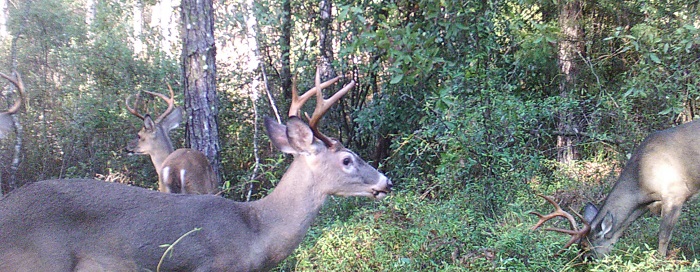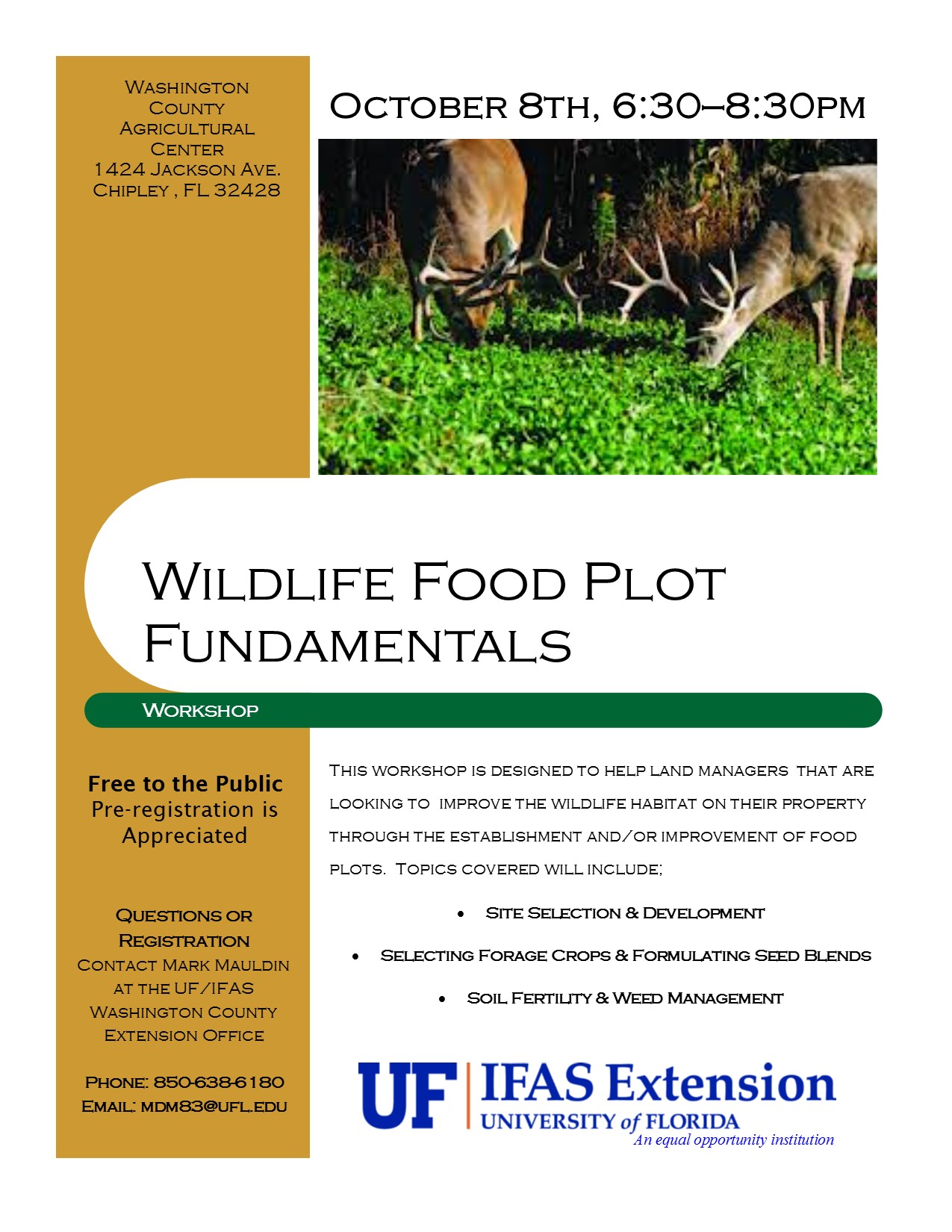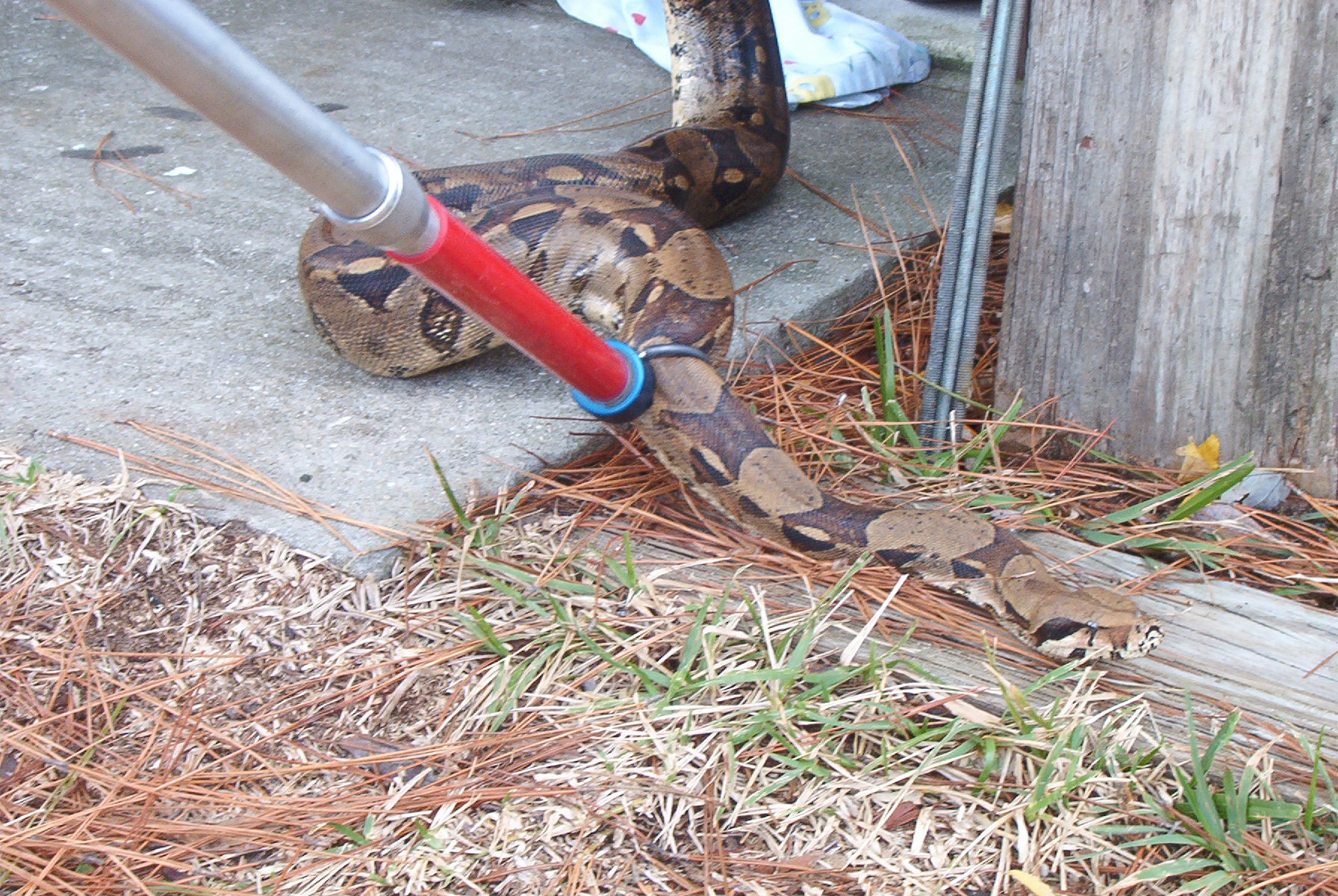Wildlife Food Plots – Considerations for Success and Workshop on 10/8

As summer browse dwindles the habitat improvement associate with wildlife food plots becomes even more evident.
Photo Credit: Mark Mauldin
Improving habitat can benefit the quantity and quality of wildlife on a piece of property. One common method for improving habitat is the establishment of food plots. Food plots are simply areas that are managed for the production of forages that help meet the nutritional requirements of the desired wildlife species.
The implementation of food plots has gained popularity largely through its association with hunting, specifically white-tailed deer hunting. Food plot establishment and hunting success can be directly related; attracting game to a specific area via the establishment of a highly desirable plant species. That said, rarely are food plots which are planned and utilized only as attractants very successful. Truly successful food plots are developed with yearlong habitat improvement in mind; improved hunting on the property is a by-product of the improvement in habitat.
Successful implementation of wildlife food plots takes planning and consideration. Many factors must be considered;
- Site selection: Factors like size, shape, soil characteristics, and location can greatly affect the potential success of a food plot.
- Nutritional demands of wildlife: Throughout the course of the year the nutritional demands of wildlife change. Wildlife, especially deer, will show preferences for different plants at different times of the year based largely on the nutritive value of the plant. Successful food plots seasonally match the nutrition offered to the nutrition need by the wildlife.
- Plant selection: Selecting the best species and varieties to plant in a food plot is a decision that tends to get a lot of attention, and rightfully so. Plantings should be selected based on how well they are adapted to the site, propensity of wildlife to utilize them, and how well they fit into the yearlong rotation. It is always advisable to plant a blend of multiple species, planting windows and persistence of the plants must be considered when formulating these blends.
- Agronomic practices: If all other factors are considered and appropriately addressed the success of a food plot is still dependent on the ability of the land manager to effectively plant and manage the crop(s). Soil fertility, weed control, planting depth, seeding rate, etc. all need to be correctly addressed to have a successful food plot.
Planning and hard work are prerequisites for successful food plots but when everything comes together seeing the benefits they provide can be a truly rewarding experience. If you are interested in learning more about successfully improving wildlife habitat through the implementation of food plots please consider attending Wildlife Food Plot Fundamentals. This workshop will be at the Washington County Agricultural Center on Thursday October 8th beginning at 6:30pm. Please see the flyer for more details, for questions or to register contact Mark Mauldin with UF/IFAS Extension, Washington County (850-638-6180, mdm83@ufl.edu).


